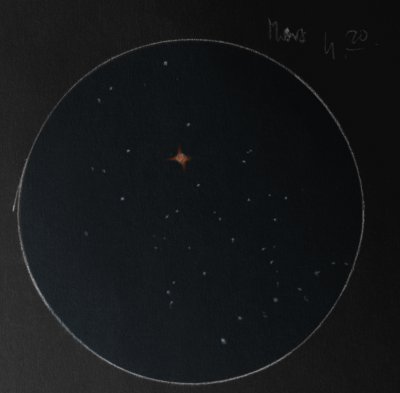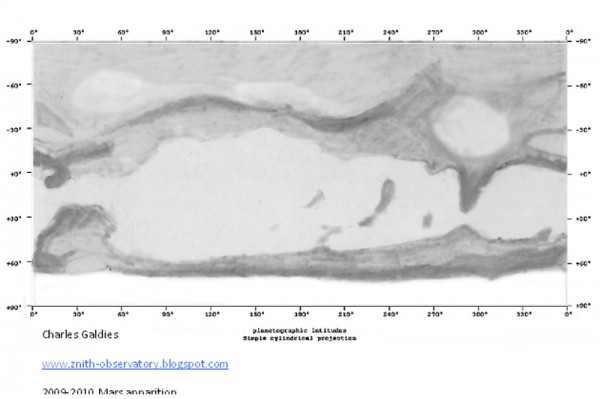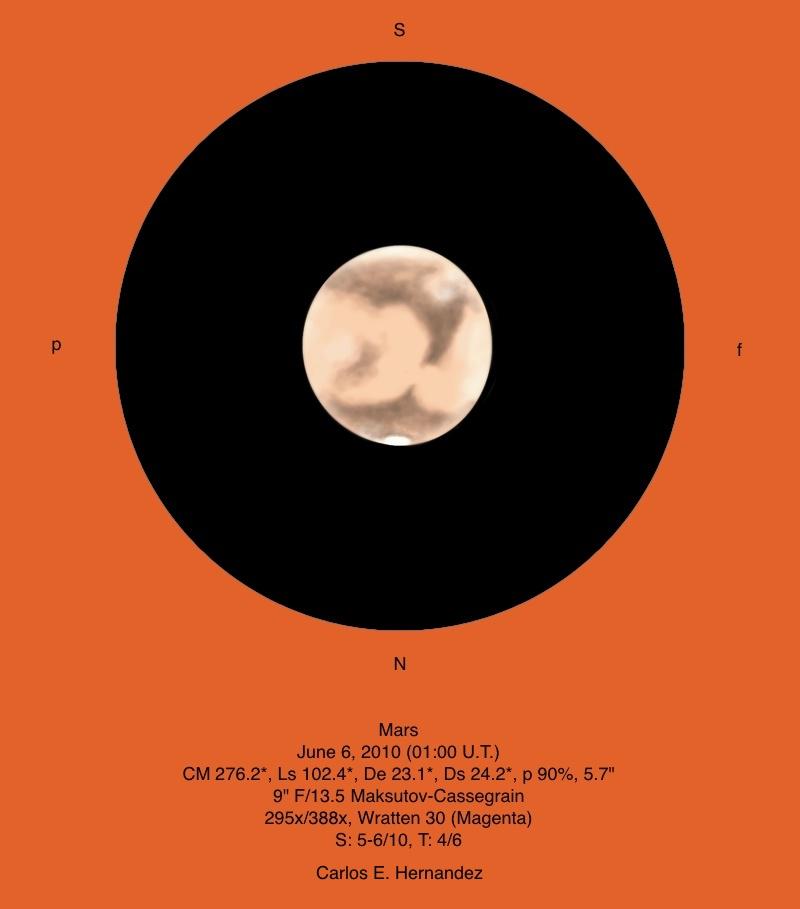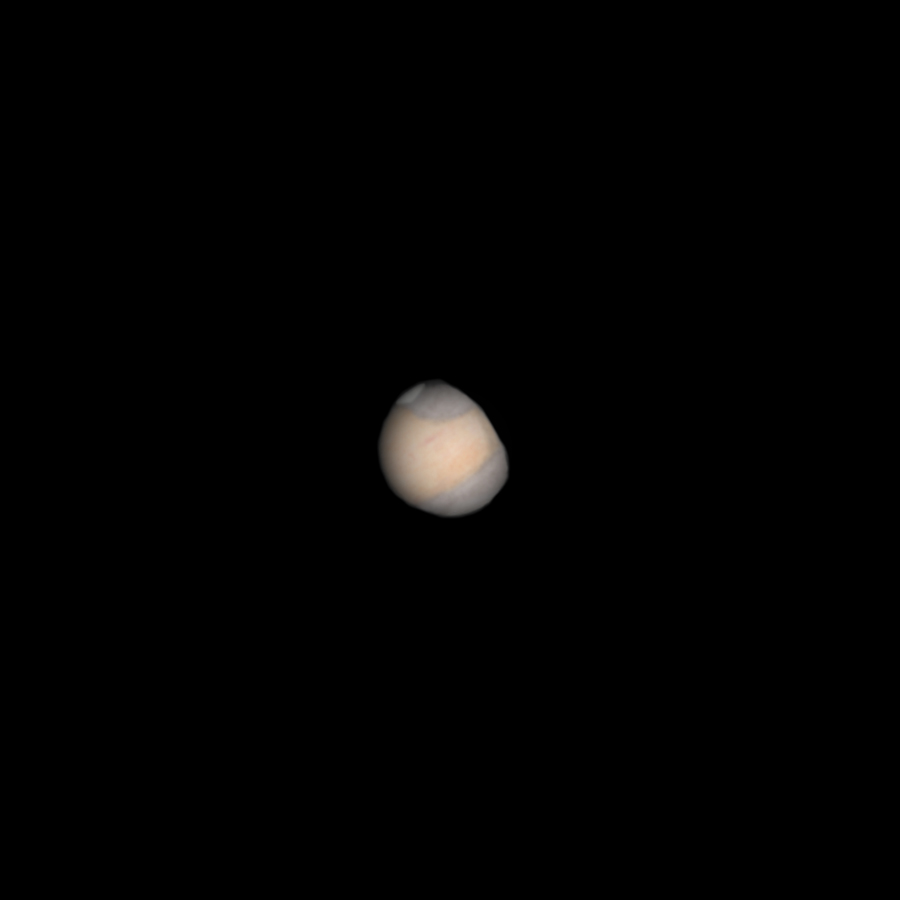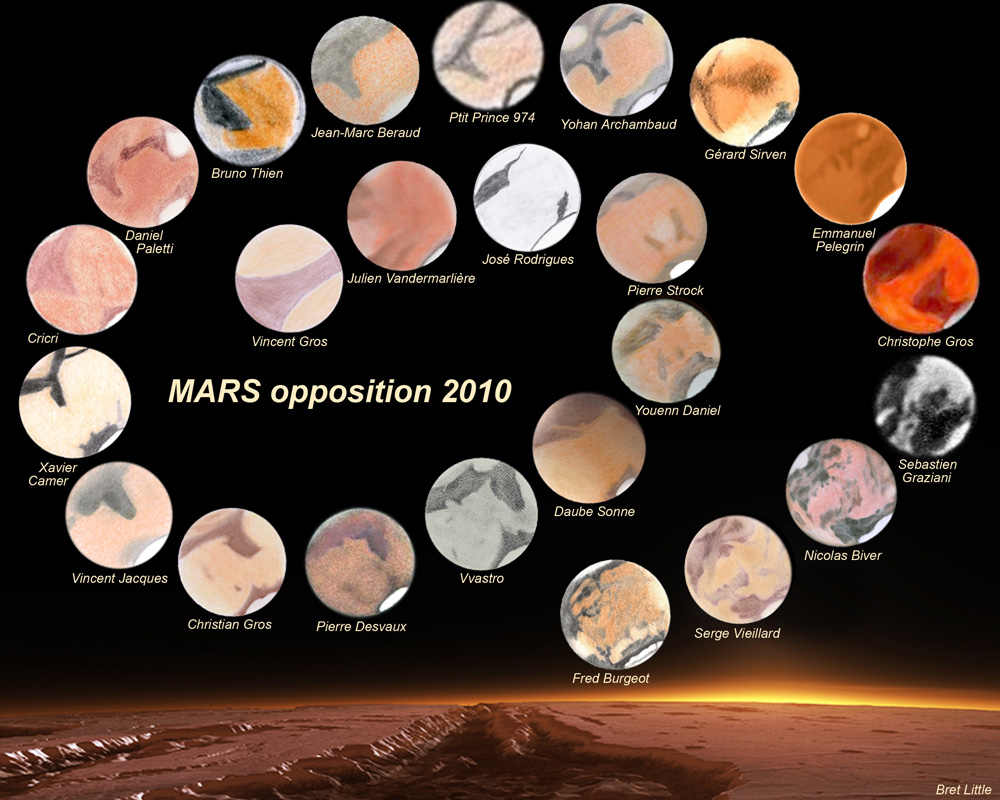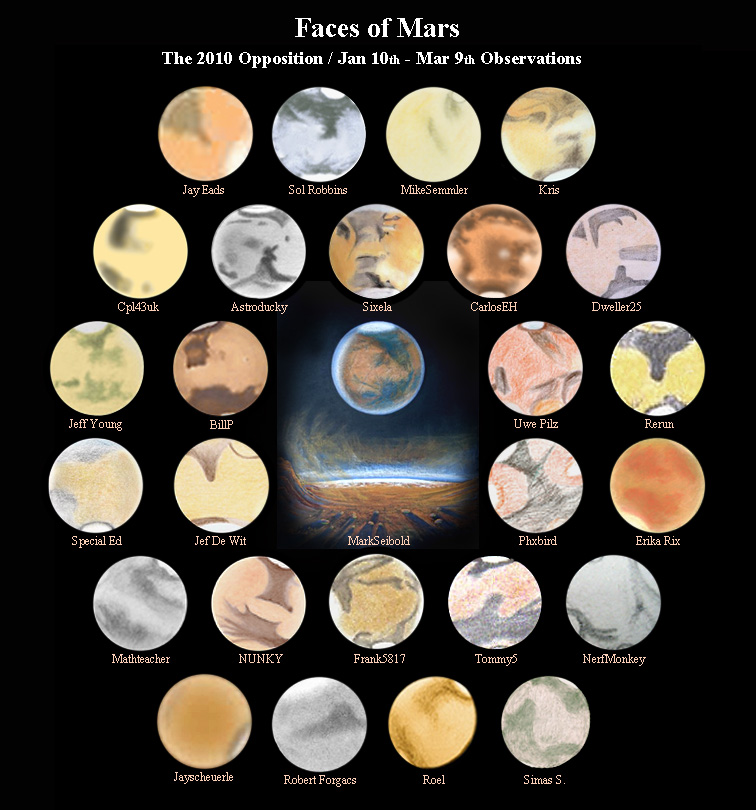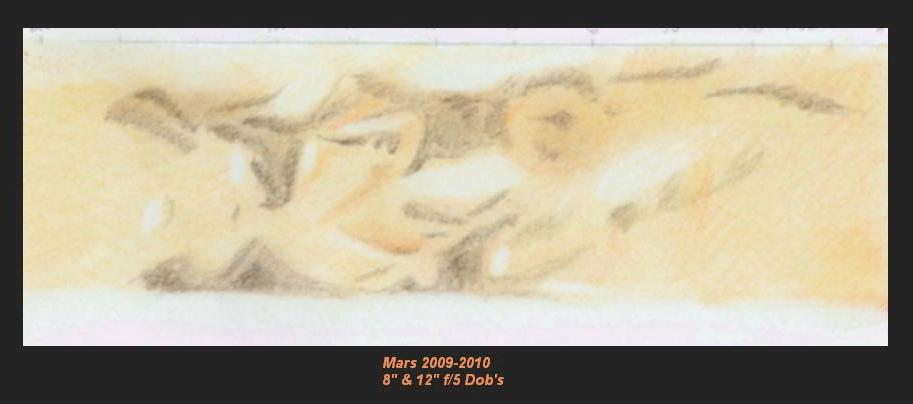
Mars Map 2009-2010
Sketch and Details by Kris Smet
Hi,
i’d like to submit the mars map from the opposition 09/10 made from various observations through my 8″ & 12″ dobsons (both f/5 which is not really ideal for planetary observing) from my backyard in belgium.
mars regularly got high enough (up to 60+ degrees) to compensate for the mostly mediocre seeing here. there were a few nights of good seeing though, especially the evening of 01 march showed some very good to excellent seeing! i’ve attached that sketch too.
i only use orthoscopic eyepieces (university optics, 4,5,6,7,9,12.5mm) wich yield up to 250x and 375x magnification in the 8″ & 12″ scopes. i find them to provide a noticeably clearer and crisper image than various standard plossl’s, and they don’t cost an arm and a leg!
To increase more i use them in combination with a televue 2,5x powermate which has the additional benefit of sharpening the edge of the fov (a normal barlow does the same as well) which is very useful when using a dobsonian telescope. i can mount the 8″ scope on a tracking mount, but not my 12″ scope.
when seeing is poor, use is made of an apodizing mask which improves seeing drastically in my experience, but dims the view a bit, but that’s hardly a problem with a target as bright as mars through a 12″ scope!

i’ve made around 20 separate sketches from which i put together the map. i started sketching mars from june 30 2009, altough i observed the tiny 4,7″ disk during the morning twilight one month earlier. observing and sketching during winter can be hard as temperatures dropped to about -14°C (from where you live this may not sound very cold though) and you need to try to keep your head as still as possible looking through the eyepiece.
a rough outdoor sketch is redone and coloured with standard colour pencils inside, where it’s warm, on a template between 3 and 8 cm depending on the actual size of the planet’s disk. then it’s scanned, sometimes brightness and contrast need to be adjusted a little, and for the individual sketches a glowing background is added representing my view through the scope.
greetings
Kris
